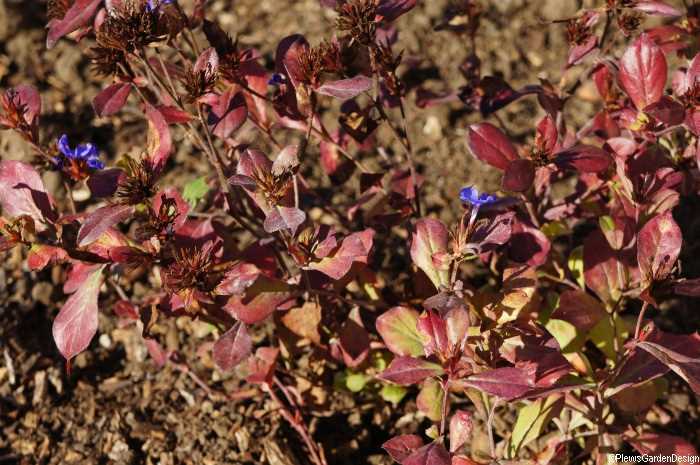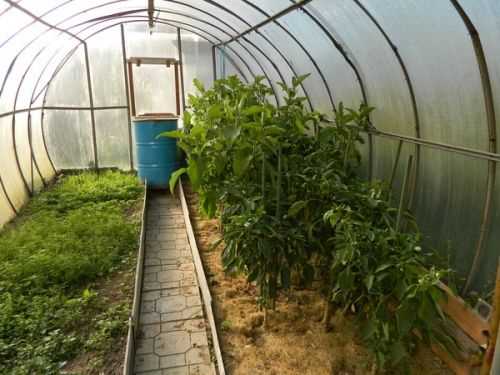- The Importance of Siderats for Soil Health
- 1. Soil Erosion Control
- 2. Nutrient Cycling and Retention
- 3. Weed Suppression
- 4. Soil Structure Improvement
- 5. Biodiversity and Habitat Creation
- Conclusion
- Choosing the Right Siderat
- 1. Climate and Growing Conditions
- 2. Soil Needs
- 3. Pest and Disease Resistance
- 4. Planting and Maintenance Requirements
- 5. Crop Rotation Considerations
- 6. Flowering and Pollination
- 7. Overall Goals
- When to Plant Siderats in Late Autumn
- 1. Before the First Frost
- 2. Ideal Soil Temperatures
- 3. Consider Crop Rotation
- 4. Available Growing Days
- 5. Winter Survival
- Preparing the Soil for Siderat Planting
- 1. Clear the Area:
- 2. Test the Soil:
- 3. Add Organic Matter:
- 4. Loosen the Soil:
- 5. Remove Any Large Rocks or Debris:
- 6. Create a Level Surface:
- 7. Choose the Right Siderat:
- 8. Follow Seed Package Instructions:
- 9. Monitor and Maintain:
- Sowing Siderat Seeds
- Managing Siderats in Late Autumn
- 1. Choosing the Right Siderat
- 2. Planting Siderats
- 3. Monitoring Growth
- 4. Providing Winter Protection
- 5. Planning for Spring
- 6. Soil Testing
- 7. Documenting Observations
- Using Siderats as Mulch
- 1. Planting and Growing Siderats
- 2. Cutting and Incorporating Siderats
- 3. Benefits of Siderat Mulch
- The Benefits of Siderats for Next Year’s Crops
- 1. Soil Conservation
- 2. Nutrient Recycling
- 3. Weed Suppression
- 4. Enhanced Soil Structure
- 5. Pest and Disease Management
- 6. Increased Organic Matter
- “Question-Answer”
- What are siderats and why are they important for soil health?
- What types of siderats can I plant in late autumn?
- How can I effectively manage siderats in late autumn?
- Can I use siderats as a source of livestock forage?
- What are the benefits of using siderats in late autumn?
- “Video” From Pasture to Production
As autumn draws to a close, it is essential for farmers and gardeners to start thinking about managing their cover crops, or siderats, to improve soil health for the coming spring. Siderats, also known as green manure, are crops that are grown specifically to benefit the soil, rather than for harvest. They can help protect against erosion, suppress weeds, improve nutrient availability, and increase organic matter content.
One key strategy for managing cover crops in late autumn is to assess their growth and determine the best time for termination. This can be done by checking the height and density of the plants, as well as considering the upcoming weather conditions. In some cases, it may be beneficial to terminate the cover crops earlier to allow for adequate decomposition before spring planting.
Another important consideration is the choice of termination method. There are several options available, including mechanical termination, such as mowing or tilling, and chemical termination, such as herbicides. Each method has its advantages and disadvantages, and the choice will depend on factors such as crop type, field conditions, and personal preferences. It is crucial to follow proper termination practices to minimize negative impacts on soil health.
Once the cover crops have been terminated, it is essential to take steps to protect the soil and maximize the benefits of the siderats. This can include leaving the cover crop residue on the soil surface as a protective mulch, or incorporating it into the soil to increase organic matter content. Additionally, considering the next crop in the rotation and adjusting nutrient management practices accordingly can help ensure optimal soil health and crop productivity.
In conclusion, managing cover crops in late autumn is a crucial step in maintaining soil health and productivity. By carefully assessing growth, choosing the appropriate termination method, and taking steps to protect the soil, farmers and gardeners can maximize the benefits of siderats and set the stage for a successful growing season the following year.
The Importance of Siderats for Soil Health
Siderats, also known as cover crops, play a crucial role in maintaining and improving soil health. These plants are grown primarily to protect and enrich the soil rather than for their harvestable qualities. Incorporating siderats into your late autumn garden can provide numerous benefits to the soil ecosystem.
1. Soil Erosion Control
Siderats help in preventing soil erosion, especially during the winter months when heavy rainfall and wind can wash away the topsoil. The dense root systems of these plants hold the soil particles together, effectively preventing erosion and preserving the integrity of the soil structure.
2. Nutrient Cycling and Retention
Siderats are often used as green manure, as they have the ability to absorb excess nutrients from the soil and store them in their tissues. When these plants are later incorporated into the soil, the stored nutrients are slowly released, becoming available for other plants to utilize.
In addition, the roots of siderats facilitate nutrient cycling by breaking up compacted soil, allowing better water and nutrient infiltration, and enhancing microbial activity. This results in improved soil fertility and nutrient availability for subsequent crops.
3. Weed Suppression
Siderats act as natural weed suppressants by outcompeting weeds for resources such as sunlight, water, and nutrients. The dense foliage of these plants shades the soil, making it difficult for weeds to germinate and grow. By planting siderats, you can reduce the reliance on herbicides and manual weeding, promoting a more sustainable and environmentally friendly approach to weed control.
4. Soil Structure Improvement
The extensive root systems of siderats, such as those of legumes and grasses, penetrate deep into the soil, helping to improve its structure. The roots create channels and pores, allowing better water infiltration and air circulation. This leads to improved drainage, reducing the risk of waterlogging and soil compaction.
5. Biodiversity and Habitat Creation

Siderats contribute to increasing biodiversity in the garden by providing food and habitat for beneficial insects, birds, and other wildlife. These plants attract pollinators, such as bees and butterflies, which play a vital role in the ecosystem by aiding in the pollination of crop plants.
Furthermore, the presence of cover crops creates a diverse habitat that supports beneficial soil organisms, including earthworms, beneficial bacteria, and fungi. These organisms contribute to soil health by enhancing nutrient cycling, decomposition of organic matter, and disease suppression.
Conclusion
By incorporating siderats into your late autumn garden, you can reap the benefits of improved soil health. These plants contribute to erosion control, nutrient cycling, weed suppression, soil structure improvement, and biodiversity enhancement. Consider adding siderats to your gardening practices to promote a vibrant, healthy soil ecosystem.
Choosing the Right Siderat
When it comes to selecting a siderat to boost soil health in late autumn, there are several factors to consider. Here are some tips on how to choose the right siderat for your garden:
1. Climate and Growing Conditions
Take into account the climate and growing conditions in your region. Different siderats thrive in different environments, so it’s important to choose one that is well-suited to your specific area. Consider factors such as temperature, rainfall, and soil type.
2. Soil Needs
Identify the specific needs of your soil. Some siderats are nitrogen-fixing, which means they have the ability to convert atmospheric nitrogen into a form that plants can use. Others may have deep taproots that help break up compacted soil. Choose a siderat that will address the specific needs of your soil.
3. Pest and Disease Resistance
Consider the pest and disease resistance of the siderat. Some siderats are known for their ability to suppress weeds and prevent the spread of diseases. Research the pest and disease resistance of different siderats to determine which one will best suit your needs.
4. Planting and Maintenance Requirements
Look into the planting and maintenance requirements of the siderat. Some siderats are easy to plant and require little maintenance, while others may require more hands-on care. Choose a siderat that matches your available time and resources.
5. Crop Rotation Considerations
Think about crop rotation considerations. If you have a specific crop rotation plan in place, choose a siderat that fits into that plan. For example, if you plan to grow brassicas in the following season, a siderat like mustard or rapeseed can help combat pests and diseases that commonly affect brassicas.
6. Flowering and Pollination
Consider the flowering and pollination habits of the siderat. Some siderats attract beneficial insects, such as bees and butterflies, which can help with pollination in your garden. Choose a siderat that will provide additional benefits beyond just boosting soil health.
7. Overall Goals
Finally, consider your overall goals for using a siderat. Are you looking to improve soil fertility, control erosion, suppress weeds, or attract beneficial insects? Different siderats will have different strengths and can help you achieve different goals. Choose a siderat that aligns with your specific objectives.
By considering these factors and doing some research, you can choose the right siderat to enhance your soil health in late autumn and set your garden up for success in the following season.
When to Plant Siderats in Late Autumn
Siderats, also known as cover crops, are an important part of maintaining soil health and fertility. Late autumn is a great time to plant siderats because the weather is cooler, and the soil has had a chance to cool down after the hot summer months. Here are some tips for when to plant siderats in late autumn:
1. Before the First Frost
It is important to plant siderats before the first frost of the season. The plants should have enough time to establish themselves and grow before the cold weather sets in. Check the local weather forecasts to determine when the first frost is expected in your area and plan your planting schedule accordingly.
2. Ideal Soil Temperatures
The ideal soil temperature for planting siderats in late autumn is between 50°F and 60°F (10°C and 15°C). This temperature range allows for optimal germination and growth of the cover crops. You can use a soil thermometer to measure the soil temperature and ensure it falls within this range before planting.
3. Consider Crop Rotation
When deciding which siderats to plant in late autumn, it is important to consider your crop rotation plan. Different cover crops provide different benefits to the soil, so choose one that will meet the specific needs of your soil and future crops. For example, legume cover crops can fix nitrogen in the soil, while grasses can help improve soil structure.
4. Available Growing Days
Take into account the available growing days before the winter frost sets in. Late autumn planting leaves a limited time for the siderats to grow before they become dormant for the winter. Choose cover crops that have a shorter growing period and can still provide some benefits to the soil even with a limited growing season.
5. Winter Survival
Ensure that the cover crops you choose have good winter survival capabilities. Some cover crops, such as winter rye or winter wheat, are more tolerant of cold temperatures and can survive throughout the winter. These crops will continue to provide soil protection and nutrient uptake even during the dormant period.
By considering these factors and planning your planting schedule carefully, you can ensure that your siderats will have enough time to establish themselves and provide maximum benefits to your soil health.
Preparing the Soil for Siderat Planting
Before planting siderats in your garden, it’s important to properly prepare the soil to ensure optimal growth and health of the cover crop. Follow these steps to prepare the soil for siderat planting:
1. Clear the Area:
Begin by removing any existing vegetation or weeds from the area where you plan to plant the siderats. This will prevent competition for nutrients and space.
2. Test the Soil:
It’s essential to understand the nutrient levels and pH of your soil before planting siderats. Conduct a soil test to determine if any amendments are necessary to optimize the conditions for the cover crop. pH levels between 6.0 and 7.5 are generally ideal for most siderats.
3. Add Organic Matter:
Enrich the soil by incorporating organic matter such as compost or well-rotted manure. This will improve soil structure, water retention, and nutrient availability for the siderats.
4. Loosen the Soil:
Use a garden fork or tiller to loosen the top few inches of soil. This will help the roots of the siderats penetrate easily and allow for better water infiltration.
5. Remove Any Large Rocks or Debris:

Remove any large rocks, sticks, or debris from the soil. These can inhibit the growth of the siderats and may interfere with future planting or cultivation.
6. Create a Level Surface:
Smooth out the soil surface using a rake or garden tool to create a level surface. This will help with even distribution of the siderat seeds and ensure uniform growth.
7. Choose the Right Siderat:
Consider the specific goals you have for your garden, such as improving nitrogen fixation, biomass production, or weed suppression. Select a siderat species that aligns with your objectives and the characteristics of your soil.
8. Follow Seed Package Instructions:

Refer to the instructions on the seed package for recommended planting depth, spacing, and timing. Different siderats have different requirements, so it’s important to follow these guidelines for optimal results.
9. Monitor and Maintain:
Keep an eye on the growth of your siderats and make sure they are properly established. Water the cover crop as necessary and monitor for any signs of pests or diseases.
By properly preparing the soil before planting siderats, you can maximize their benefits to the soil health and ensure a successful cover crop growth.
Sowing Siderat Seeds
Sowing siderat seeds is an important step in boosting soil health in late autumn. By planting cover crops or green manure crops, you can improve soil fertility, suppress weeds, and prevent erosion.
1. Choose the Right Siderat:
Before sowing siderat seeds, it’s important to choose the right cover crop for your soil and climate conditions. Consider factors such as nitrogen fixation, nutrient scavenging, and weed suppression capabilities. Some popular siderat options include legumes like clover and vetch, as well as grasses like rye and oats.
2. Prepare the Soil:
Prepare the soil before sowing siderat seeds by removing any weeds or debris. Loosen the top layer of soil using a garden fork or tiller to create a smooth seedbed. Avoid compacting the soil as it can hinder seed germination and root development.
3. Sow the Seeds:
There are different methods of sowing siderat seeds, including broadcasting and drilling. Broadcasting involves spreading the seeds evenly by hand or using a broadcast seeder. Drilling is the process of using a seed drill to plant the seeds at a specific depth. Follow the instructions on the seed packet for the ideal sowing depth and spacing.
4. Water and Mulch:
After sowing the siderat seeds, water the area thoroughly to ensure good seed-to-soil contact. This will help with germination. Consider adding a layer of mulch to retain soil moisture and protect the seeds from birds and other pests.
5. Monitor and Maintain:
Regularly monitor your siderat crops to ensure they are growing well. Weed control may be necessary to prevent competition with the cover crops. Avoid letting the siderat crops flower or go to seed, as this can lead to self-seeding and potential weed issues in the future.
6. Incorporate the Siderat:
In late winter or early spring, when the siderat crops have grown to a suitable height, it’s time to incorporate them into the soil. Cut down the cover crops and till them into the soil. This will add organic matter and nutrients, improving soil structure and fertility.
Sowing siderat seeds is a beneficial practice for managing soil health in late autumn. By following these steps, you can promote a healthy soil ecosystem and prepare your garden for future plantings.
Managing Siderats in Late Autumn

1. Choosing the Right Siderat
As the autumn season progresses, it’s important to select the appropriate cover crop or siderat for your soil. Consider factors such as the specific needs of your soil, the upcoming winter weather conditions, and the main crop you plan to grow in the following season. Some common options for late autumn siderats include winter rye, hairy vetch, crimson clover, and field peas.
2. Planting Siderats
Once you’ve chosen the suitable siderat, prepare the soil by removing any weeds or debris. Sow the seeds according to the recommended planting depth and spacing. It’s important to ensure good seed-to-soil contact for optimal germination. After planting, lightly water the area to help the seeds settle and start their growth.
3. Monitoring Growth
Regularly monitor the growth of your siderat to ensure it’s developing well before winter arrives. Look for healthy foliage and strong root systems. If you notice any issues, such as nutrient deficiencies or pest infestations, take appropriate measures to address them and promote healthy growth.
4. Providing Winter Protection
To protect your siderat from harsh winter conditions, consider using mulch or a cover crop blanket. This will help insulate the plants and prevent frost damage. Additionally, it’s important to avoid overwatering during the winter months, as excess moisture can lead to root rot or other fungal diseases.
5. Planning for Spring
During late autumn, start planning for your spring planting. Consider incorporating the siderat into your crop rotation plan to enhance soil health and manage pests and diseases. You can also plan to terminate the siderat before it goes to seed, allowing it to decompose and release valuable nutrients back into the soil.
6. Soil Testing
Before the winter season, consider conducting a soil test to assess nutrient levels and pH. This will help you determine if any amendments are needed to optimize soil health. Based on the soil test results, you can plan for any necessary fertilization or soil amendments in the spring.
7. Documenting Observations

Keep a record of your late autumn siderat management practices and observations. This will help you track your progress over time and make adjustments as needed in future seasons. Note any successes or challenges faced, and document the overall impact on soil health and productivity.
By effectively managing siderats in late autumn, you can boost soil health, prevent erosion, control weeds, and improve overall crop yields in the upcoming growing season.
Using Siderats as Mulch
Siderats, also known as cover crops or green manure, can serve as an excellent mulch material for your garden. Using siderats as mulch helps to improve soil health, suppresses weed growth, and conserves moisture. Here are some tips on using siderats as mulch:
1. Planting and Growing Siderats
- Choose appropriate siderat species for your specific soil and climate conditions. Popular options include clover, winter rye, buckwheat, and hairy vetch.
- Sow siderats in the late summer or early autumn to allow them to establish before the first frost. Follow the recommended planting instructions for each specific siderat species.
- Maintain good soil moisture throughout the growing season to ensure strong siderat growth.
- Avoid the use of herbicides or pesticides on your siderat crops to maintain their beneficial properties.
2. Cutting and Incorporating Siderats
- When your siderat has reached its desired growth stage (typically in late autumn), cut it down to the ground using garden shears or a lawnmower.
- Leave the siderat cuttings on the soil surface as a mulch layer. This will help to suppress weed growth and conserve soil moisture.
- The siderat cuttings will gradually decompose over time, releasing nutrients back into the soil.
- If you prefer a neater appearance, you can chop the siderat cuttings into smaller pieces using a garden shredder or a sharp spade before applying them as mulch.
3. Benefits of Siderat Mulch
Using siderats as mulch offers several benefits:
- Suppression of weeds: The thick mulch layer created by siderat cuttings prevents sunlight from reaching weed seeds, reducing weed germination and growth.
- Improved soil health: Siderats enrich the soil with organic matter as they decompose, improving soil structure, fertility, and microbial activity.
- Conservation of moisture: The mulch layer helps to retain soil moisture by reducing evaporation and protecting against temperature fluctuations.
- Prevention of erosion: Siderat mulch provides valuable protection against soil erosion caused by wind and rain.
In summary, utilizing siderats as mulch is an effective strategy for maintaining healthy soils and enhancing garden productivity. By following these tips, you can harness the power of cover crops to create sustainable and thriving garden beds.
The Benefits of Siderats for Next Year’s Crops
Siderats, also known as cover crops, are plants that are grown specifically to improve soil health and fertility. They are planted during the off-season, typically in late autumn, and provide a range of benefits for next year’s crops. Let’s take a look at some of the key benefits:
1. Soil Conservation
Siderats help prevent soil erosion by acting as a protective cover. Their root systems hold the soil particles together, reducing the risk of erosion caused by wind and water. This helps to maintain the structure of the soil and prevent nutrient loss.
2. Nutrient Recycling
Siderats are excellent at scavenging nutrients from deep within the soil, helping to prevent leaching and making those nutrients available for next year’s crops. When the siderats are incorporated into the soil, they release these nutrients, enriching the soil and providing a natural source of fertilizer.
3. Weed Suppression
Siderats can help suppress the growth of weeds by competing for resources such as light, water, and nutrients. As these cover crops establish and grow, they shade out weed seedlings, reducing their competition with next year’s crops.
4. Enhanced Soil Structure
The extensive root systems of siderats improve soil structure by breaking up compacted soil. This allows for better water infiltration, root penetration, and air movement through the soil. The improved soil structure promotes healthier root growth and overall plant development.
5. Pest and Disease Management
Siderats can also play a role in managing pests and diseases. Some cover crops, such as marigolds and mustard greens, release natural compounds that suppress certain pests and diseases. Using siderats in rotation with cash crops can help break pest and disease cycles and reduce the need for chemical interventions.
6. Increased Organic Matter

As siderats decompose, they contribute organic matter to the soil. This organic matter improves soil fertility, water-holding capacity, and nutrient retention. It also provides a food source for beneficial soil microorganisms, such as earthworms, that further enhance soil health.
Overall, incorporating siderats into your crop management strategy can greatly benefit your next year’s crops. They contribute to soil conservation, nutrient recycling, weed suppression, improved soil structure, pest and disease management, and increased organic matter. So consider planting cover crops this autumn to boost the health and productivity of your soil for the upcoming growing season.
“Question-Answer”
What are siderats and why are they important for soil health?
Siderats are cover crops that are planted specifically to improve soil health. They help reduce erosion, add organic matter to the soil, suppress weeds, and fix nitrogen.
What types of siderats can I plant in late autumn?
Some common siderats that can be planted in late autumn include rye, oats, radishes, and clover.
How can I effectively manage siderats in late autumn?
To effectively manage siderats in late autumn, it is important to mow or till them down before they go to seed. This will prevent them from becoming weeds in the following growing season.
Can I use siderats as a source of livestock forage?
Yes, many siderats can be grazed by livestock. However, it is important to monitor the grazing intensity to avoid damaging the cover crop or the soil.
What are the benefits of using siderats in late autumn?
Using siderats in late autumn can help improve soil health by increasing organic matter, protecting the soil from erosion, suppressing weeds, and providing nutrients for the following crop.







